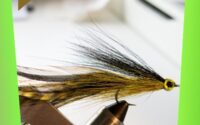| Disclosure: Just to be open and honest the buttons and links you click on in the website will in most cases take you to another website where you can purchase the products I am reviewing. As an Amazon Associate I earn from qualifying purchases. |
Can You Clean Fly Line With Dish Soap? Get the Grim Off!
Quick Post Navigation
- Introduction
- Understanding Fly Line
- Why Clean Your Fly Line?
- Traditional Methods of Cleaning Fly Lines
- Can You Use Dish Soap to Clean Fly Lines?
- Pros of Using Dish Soap
- Cons of Using Dish Soap
- Best Practices for Cleaning Fly Lines
- Alternative Cleaning Solutions:
- Tips for Extending Fly Line Lifespan:
- Common Fly Line Problems and Solutions
- Expert Advice: What Professionals Recommend
- Conclusion
- FAQs
- “Check out some of our other Buying Guides”

Introduction
Fly fishing enthusiasts understand the importance of keeping their gear in top condition, and fly lines are no exception. A clean fly line not only performs better but also extends the lifespan of your fishing equipment. Among the various cleaning methods suggested by anglers, one common question arises: Can you effectively clean a fly line using dish soap?
Understanding Fly Line
Before discussing cleaning methods, it’s crucial to grasp the composition and structure of fly lines. Typically crafted from materials like PVC, fly lines come in diverse types tailored for specific fishing scenarios and techniques. Understanding these variations is key to selecting the appropriate cleaning approach.
Why Clean Your Fly Line?
Fly lines are prone to accumulating dirt, grime, and other contaminants over time. These impurities can adversely affect casting performance, buoyancy, and overall fishing enjoyment. Regular cleaning is therefore essential to maintain the fly line’s optimal performance and longevity.
Traditional Methods of Cleaning Fly Lines
Over the years, anglers have developed various techniques for cleaning fly lines, ranging from commercial cleaning solutions to homemade remedies. While some methods effectively remove dirt, others may inadvertently damage the fly line, leading to premature wear and tear.
Can You Use Dish Soap to Clean Fly Lines?
One commonly suggested method for cleaning fly lines is using dish soap. However, there are misconceptions surrounding this approach. While dish soap can indeed remove surface dirt and grime, its potential impact on the fly line’s material and performance warrants closer examination.
Pros of Using Dish Soap
Using dish soap for fly line cleaning offers several advantages. It’s easily accessible, cost-effective, and can effectively restore the line’s slickness and buoyancy, enhancing casting performance.
Cons of Using Dish Soap
Despite its convenience, using dish soap may pose drawbacks. Certain additives or chemicals present in dish soap formulations could potentially degrade fly line coatings, compromising its performance and durability over time.
Best Practices for Cleaning Fly Lines
To ensure safe and effective cleaning, it’s essential to follow a systematic approach using mild cleaning solutions specifically designed for fly lines. Avoid abrasive materials or harsh chemicals that may compromise the line’s integrity.
Alternative Cleaning Solutions:
For environmentally-conscious anglers, there are alternative cleaning products available that offer effective fly line maintenance without the potential risks associated with dish soap. These eco-friendly options provide a safer and sustainable approach to cleaning fly lines.
- Product Type: SPORTING_GOODS
- Package weight : 0.068 kilograms
- Package dimensions : 4.7 L x 4.8 W x 12.7 H (centimeters)
- Country of Orgin: United States
Tips for Extending Fly Line Lifespan:
In addition to regular cleaning, proper storage and maintenance practices are vital for prolonging the lifespan of fly lines. Avoid exposing them to prolonged sunlight or extreme temperatures, and conduct regular inspections for signs of wear or damage.
Common Fly Line Problems and Solutions
Understanding common issues such as cracks, tangles, or sinking can empower anglers to troubleshoot and address these problems promptly, ensuring uninterrupted fishing experiences.
Expert Advice: What Professionals Recommend
Experienced anglers and fly fishing experts stress the importance of regular fly line maintenance. They advocate for using gentle cleaning solutions and conducting thorough inspections to identify any issues early on, thus maximizing the longevity and performance of your fly line.
Conclusion
Maintaining a clean fly line is crucial for optimizing fishing performance and preserving your gear. While using dish soap may seem like a convenient option, it’s essential to weigh the pros and cons and explore alternative cleaning methods for long-term fly line care.
FAQs
Q) Can I use any type of dish soap to clean my fly line?
A) It’s generally recommended to use mild, non-abrasive dish soaps without added scents or harsh chemicals. Look for options labeled as gentle or suitable for delicate surfaces to minimize the risk of damaging your fly line.
Q) How often should I clean my fly line?
A) The frequency of cleaning depends on various factors such as fishing conditions, frequency of use, and the presence of dirt or debris. As a general rule, it’s advisable to clean your fly line at least once every few fishing trips or whenever you notice a decrease in performance.
Q) Will using dish soap affect the buoyancy of my fly line?
A) Using dish soap in moderation to clean your fly line shouldn’t significantly affect its buoyancy. However, excessive use or leaving residues on the line could potentially alter its buoyancy. It’s essential to rinse the line thoroughly after cleaning to remove any soap residue.
Q) Can I use a dishwasher to clean my fly line?
A) Using a dishwasher to clean your fly line is not recommended. Dishwashers use hot water and detergents that may be too harsh for fly line materials and could cause damage or degradation. It’s best to stick to manual cleaning methods using gentle cleaning solutions.
Q) Are there any specific brands of dish soap recommended for cleaning fly lines?
A) While there isn’t a specific brand of dish soap universally recommended for cleaning fly lines, it’s advisable to choose mild, unscented options without added dyes or harsh chemicals. Look for dish soaps that are gentle on hands or labeled as suitable for delicate surfaces.
“Check out some of our other Buying Guides”
Last update on 2025-07-16 / Affiliate links / Images from Amazon Product Advertising API
This product presentation was made with AAWP plugin.



